#cosmic microwave background
Text
Physics Friday #16: The Cosmic Microwave Background (CMB)
This was originally going to be a post on Baryon Acoustic Oscillations, but I think that it's better to first discuss the CMB broadly before getting onto that, keeping the post lengths short(er).
Introduction: Our bath of Microwave Radiation
The CMB is everywhere, literally. Where you stand right now you are being bombarded by a bath of microwave radiation originating from the CMB. In fact, it's part of what causes the static on old TVs.
Now don't worry, the radiation is very weak, so it's unlikely you'll actually be hurt.
The CMB ceased to exist about 13 billion years ago, what you see in the microwave part of the spectrum is just what was left over.
Because the speed of light is not infinite, when we look really far out in the distance, we actually look back in time.
Measuring an object 1 light-year away means we only see what that object looks like a year ago. Measuring an object 1 billion light-years away means we are looking at that object 1 billion years in the past (ignoring the expansion of the universe).
If we account for an expanding universe, light actually travels a lot further. Because what was 13 billion ly has expanded into ~40 billion ly. However, we still see it as 13 billion ly.
This allows us to see the universe in it's early stages of life.
Eras of the Early Universe
The eras of our universe are crucial to understanding the CMB. In the first few seconds after the big bang, we have the hadron era, where the first protons and neutrons form.
A few minutes later, the temperature of the universe drops enought that these protons and neutrons then form into stable atomic nuclei during what's known as big bang nucleosynthesis.
Effectively we have nuclear fusion happening everywhere in space, like in the core of most stars, including our sun.
Eventually our universe expands to such a point that the temperature drops below a point where we cannot have nuclear fusion. But the temperature is still high enough that the universe is exclusively plasma.
Plasma is the state of matter in which electrons cannot bind themselves to their respective atomic nuclei, the universe is considered 'ionised' - as it's all just electricity.
During this time, the universe is opaque. Because any light moving around in the universe gets instantly absorbed by the loose electrons or nucleons.
We'll have to wait a couple thousand years before the universe cools even further, to the point where we get normal gaseous matter. The universe suddenly becomes translucent. This is known as the era of recombination.
At the moment of this occurring, any light emitted by the previously hot plasma escapes and can travel freely through the universe unobstructed. This thermal radiation comes in the form of infrared radiation.
Travelling Radiation
The radiation of the CMB is the earliest possible light we can see in the universe. Because any previously-existing light is obscured by the plasma earlier-on.
The radiation emitted from the CMB travels across space in order to reach us. And during that time it gets 'corrupted' in a sense.
Redshift - Turning Infrared into Microwaves
Redshift is a phenomena where light waves will stretch, their wavelength is increased as they are released and move through space.
Expanding space means that the CMB is effectively moving away from us at very fast speeds. This creates a doppler effect where the light waves will inherently be released out towards us at a longer wavelength. This is called doppler redshift.
The expansion of space also affects the wavelength as the photon travels. The space in-between each photon's wavelength stretches too, creating more cosmological redshift.
For most objects, cosmological redshift is negligible, because the light doesn't travel far enough for space to expand inside the wave. But the CMB is very far away, meaning that both forms of redshift are non-negligible.
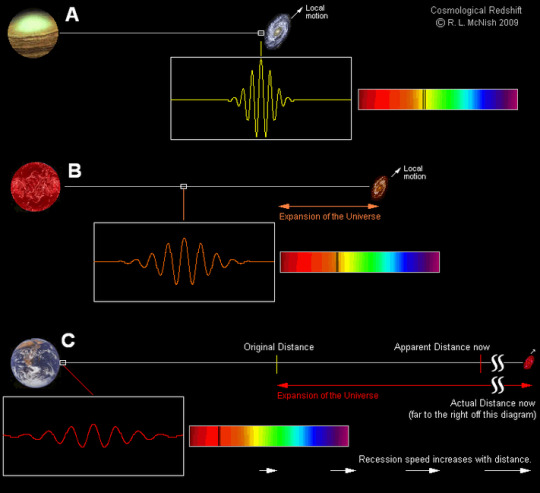
Image credit: Forbes
The CMB exists at a redshift of ~1100, this doesn't mean much on it's own. What it means is that red-coloured light will become shifted to short radio frequencies that you can pick up on your radio.
The Lyman-Alpha Forest
Of course, our translucent gas is not perfectly translucent. Gas can absorb and emit specific wavelengths of light that perfectly correspond to energy levels an electron can take within an atom.
The Lyman series is an example of hydrogen emission/absorption lines, and as the light travels through hydrogen gas, the wavelengths corresponding to the Lyman series gets absorbed by our atoms.
This process keeps happening. As redshift alters the wavelengths of the surviving waves, any gas obstructing the CMB's light will have fresh light to absorb.
The effect is this continual series of absorption lines appearing in the otherwise clear spectra of radiation. Creating a 'forest' of several absorption lines.
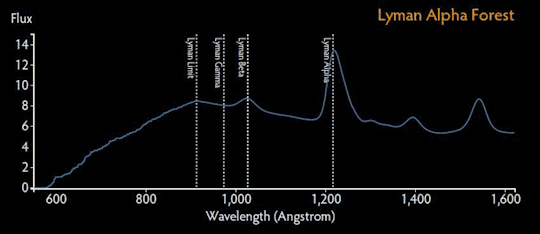
Image Credit: Wikipedia
Re-Ionisation
Some gas in the early universe ends up converting back into plasma, this is caused by gravity pulling on small inconsistencies in the gas density.
These bright spots of plasma were what formed the first stars, galaxies, and black holes. But for us, it also effects the CMB.
Of course, ionised gas is opaque, so any light that happens to come across a star in-formation is absorbed instantly.
Observing the CMB
There have been multiple attempts to view the CMB. Despite all of our obstructions, space is mostly empty. Not just that, but the visible blemishes on our dark sky (like the milky way) can be removed in-post.
There are three notable missions: COBE (1989-93), WMAP (2001-10), and lastly the ESA Planck/BICEP mission (2015-19). Each increasing in resolution, each adding more information to our measurements.
When the CMB was first observed in the COBE mission, it saw something really strange, the CMB was really smooth, and looked like it had a dipole in it. This is the top image on the below diagram.

Image Credit: NASA
This dipole is actually caused by the orbital motion of the Earth! Not just around the sun, but also within our galaxy.
Alright, so let's try and re-configure our calculations, this time we will account for the movement of the Earth.
What we get is the middle image. There's still a big band in the centre of the frame, which actually is caused by our milky way, as the milky way itself also emits microwave radiation.
Thus this gives us the lower image. A background which looks approximately the same everywhere, but is distinctly not on local scales. This discovery broke one of our main assumptions in cosmology at the time - which is that the background is the same in all directions.
Something interesting also occurs as well. When all movement in space is removed, the CMB becomes static. This means that the CMB can act as a universal frame of reference, from which all other reference frames can be compared against.
This concept appears to violate the principle of relativity, but at the same time, our cosmological models require a reference frame to compare against. This is one example of an unsolved problem in GR.
While there isn't a visible dipole in our CMB observations, a dipole would have significant ramifications on our frame-of-refernce models.
Refining the Map and Using it
WMAP and the Planck mission refined our data to a point where we can use it for more interesting measurements.

Image Credit: ESA
The size of each small blob actually corresponds to the curvature inherent in the universe. As when we look far back into space, different curvatures will create different apparent sizes.
Not just that, but we can use the CMB to observe the reverberations of sound waves, this analysis allows us to measure the amount of matter that existed in the early universe.
With both measurements of curvature and matter density, we can estimate both the strength of dark energy and the expansion rate of the universe, allowing us another method to quantify dark matter.
These two data points turn out to be observed using the same phenomena, Baryon Acoustic Oscillations (BAOs) - a future topic (maybe in 2 weeks' time).
Conclusion
The CMB is still being investigated and still being observed. The main reason is because it is our only existing window into viewing the early universe.
Not just that, but the CMB provides important data that gave rise to both inflation theory and the eventual formation of our structure in the universe.
I will eventually cover inflation theory. But sooner, I will talk about BAOs. As they are also a rather interesting discussion in cosmology. The measurement of BAOs is what has led to our current cosmological crisis, where the CMB's measurements misalign with other data points in measuring the strength of dark energy.
As always, please feel free to comment your thoughts, including criticisms. Follow if you want to see more!
#physics friday#stem#academics#stemblr#science#physics#astronomy#astrophysics#cosmic microwave background
69 notes
·
View notes
Text
Baby pictures!
10 notes
·
View notes
Note
At what point in the first six days did God create the Cosmic Microwave Background?
Probably when he was hiding all the fossils while he was waiting for his burrito to finish microwaving.
#ask#cosmic microwave background#cosmic microwave background radiation#creation#burrito#creator god#religion#religion is a mental illness
8 notes
·
View notes
Text
What Is Cosmic Microwave Background Radiation
The Cosmic Microwave Background radiation, or CMB for short, is a faint glow of light that fills the universe and falls on Earth with nearly uniform intensity from every direction.
It is the residual heat of creation, the afterglow of the big bang that has been streaming through space for the last 14 billion years like the heat from a sun-warmed rock, reradiated at night.
The CMB is the oldest light we can see, stretching back in both time and space. This light began its journey 14 billion years ago, long before the Earth or even our galaxy existed.
It's a relic from the universe's early days, when it wasn't the cold, dark place it is now, but rather a raging storm of radiation and elementary particles.
81 notes
·
View notes
Text
Unveiling the Cosmic Remnant: Exploring the Crab Nebula (M1)
Credits: NASA, ESA, J. Hester and A. Loll (Arizona State University)
Among the fascinating remnants of stellar explosions, the Crab Nebula, also known as Messier 1 (M1), stands as a testament to the immense forces that shape our universe. Located in the constellation Taurus, this celestial spectacle has captivated astronomers and enthusiasts alike for centuries. In this article, we embark on a…

View On WordPress
#Astrobiology#Astronomical Catalogs#Astronomical Databases#Astronomical Imaging#Astronomical Instruments#Astronomical Observations#Astronomical Phenomena#Astronomical Spectroscopy#Astronomical Surveys#Astronomical Units#Black Holes#Celestial Bodies#Constellations#Cosmic Microwave Background#Cosmology#Dark Energy#Dark Matter#Exoplanets#Galaxies#Light-years#Meteor Showers#Nebulae#Planets#Solar System#Space Exploration#Stars#Stellar Evolution#Supernovae#Telescopes
6 notes
·
View notes
Text
There is also the hope that we can take advantage of the greatest atom smasher of all, the Big Bang itself. Radiation from the Big Bang may give us a clue to dark matter and dark energy. First of all, the echo, or afterglow, of the Big Bang is easy to detect. Our satellites have been able to detect this radiation to enormous accuracy.
Photographs of this microwave background radiation show that it is remarkably smooth, with tiny ripples appearing on its surface. These ripples, in turn, represent tiny quantum fluctuations that existed at the instant of the Big Bang that were then magnified by the explosion.
What is controversial, however, is that there appear to be irregularities, or blotches, in the background radiation that we cannot explain. There is some speculation that these strange blotches are the remnants of collisions with other universes. In particular, the CMB (cosmic microwave background) cold spot is an unusually cool mark on the otherwise uniform background radiation that some physicists have speculated might be the remnants of some type of connection or collision between our universe and a parallel universe at the beginning of time. If these strange markings represent our universe interacting with parallel universes, then the multiverse theory might become more plausible to skeptics.
Already, there are plans to put detectors in space that can refine all these calculations, using space-based gravity wave detectors.
The God Equation: The Quest for a Theory of Everything by Michio Kaku
#microwave background radiation#big bang#cmb#cosmic microwave background#multiverse#cold spots#parallel universe#astronomy#The God Equation#Michio Kaku#カク ミチオ#string theory#physics#science#grand unified theory#books#quote#atypicalreads#theoretical physics#science facts#history#science history#reading#bookblr#bibliophile#bookworm#currently reading#booklr
3 notes
·
View notes
Text
The Accidental Astronomer: How Tutankhamun’s Quest for the Perfect Breakfast Led to Cosmic Revelations
In the golden age of Egypt, where the pyramids kissed the sky and the Nile nourished the land, I, Pharaoh Tutankhamun, embarked on an endeavor most peculiar. It began on a morning like any other, except, perhaps, for my insatiable craving for a breakfast not of this world. "Miu-Miu," I declared to my feline advisor, who lounged beside my golden goblet, "today, we seek a feast that rivals the gods!" Miu-Miu, whose wisdom was surpassed only by her appetite, nodded in solemn agreement, her whiskers twitching with anticipation.
Our journey led us beyond the palace walls, into the bustling markets of Thebes, and through the whispering reeds of the Nile. Yet, as the sun arched westward, our quest remained fruitless. Dejected, we returned to the palace, where a curious sight befell us. Amidst my royal chamber, a peculiar artifact lay untouched – a gift from a distant land, a device they called a "telescope."
In a twist of fate, driven by whimsy and perhaps a touch of divine madness, I aimed this celestial tube toward the heavens, hoping to catch a glimpse of a divine pantry. What I found, however, was not the secrets to an ethereal breakfast but a vista that stretched beyond the horizon of my understanding. The stars, the moon, the very fabric of the night sky unraveled before me, a cosmic feast for the eyes.
"Miu-Miu," I whispered, my voice trembling with awe, "the universe is far more vast and filled with wonders than any kingdom on earth." The stars twinkled in silent agreement, and in that moment, under the celestial dome, I felt a hunger of a different kind – a thirst for knowledge about the cosmos.
Night after night, Miu-Miu and I observed the heavens, recording our findings on papyrus scrolls. We noted the patterns of the stars, the phases of the moon, and the shifting tapestry of the night sky. Yet, it was a discovery made on a particularly clear night that would forever change the course of our cosmic inquiries.
As I peered through the telescope, a faint, omnipresent glow seemed to envelop the night sky. Puzzled, I consulted the wisest astronomers and seers in my kingdom, but none could explain this mysterious luminescence. It was then, in a dream visited upon me by Thoth, god of wisdom and knowledge, that I understood the true nature of my discovery.
Thoth revealed to me that this glow was not a trick of the eye nor a figment of my imagination, but the remnants of a cosmic banquet, the universe's own breakfast, if you will, from a time before time itself. This light, Thoth explained, was the Cosmic Microwave Background (CMB) – the afterglow of the universe's creation, a celestial feast spread across the entirety of the cosmos.
Armed with this divine insight, I resolved to share my newfound knowledge with the world. "Miu-Miu," I proclaimed, "we shall pen a guide to the stars, a manual that will illuminate the mysteries of the cosmos for all of humanity!" And so, with a heart full of wonder and a quill poised to scribe our celestial discoveries, I began to write the article that would serve as a beacon for star gazers and scholars alike: "Pharaoh’s Guide to the Stars: Tutankhamun Explains the Cosmic Microwave Background."
Thus, from a quest for a breakfast unlike any other, emerged a tale of cosmic proportions. A story that began with an unfulfilled appetite led to revelations about the universe's oldest light, guided by the paws of a feline and the wisdom of the gods. And while the secrets of the universe began to unfold before us, Miu-Miu and I often wondered – could the gods themselves enjoy breakfast as vast and mysterious as the cosmos? Perhaps, in our quest for knowledge, we had stumbled upon the divine feast we sought all along.
0 notes
Text

#cmb#cosmic microwave background#Here Be Dragons#maps#old maps#cartography#myths#interestingly Here be dragons is a phrase that references the dangers that lay in the unknown#it was ‘supposedly’ used in cartography to warn people#however there is only one know instance of it being used in Latin
0 notes
Text
Y’all ever just vibe listening to some of that cmbr
0 notes
Text
Physics Friday #18: Sounds of the CMB - Baryon Acoustic Oscillations
Introduction: What Are BAOs?
It's time for colours!
Let's break down the term Baryon Acoustic Oscillations (BAOs) ...
A Hadron is a particle made of several quarks, a Baryon is a Hadron that contains an odd number of quarks.
Baryonic matter makes up a majority of the stable, visible matter in the universe. Both protons and neutrons are types of Baryons, so most Baryonic matter is, shockingly, atoms.
Acoustic generally has two definitions, one musicological and one scientific. Scientifically, any 'acoustic' thing involves sound. Specifically here, we're using it to discuss the production and propagation of sound.
Oscillations is a term very related to sound, if you read my posts on the mechanics of sound, oscillations, waves, periodic motion, are all the same phenomena.
Here, an acoustic oscillation is just a looping/repeated physical motion in a medium, like plasma.
Thus, putting everything together, a BAO is the physical motion in a plasma of hydrogen/helium, caused by the propagation of sound waves.
How do they form?
After the era of nucleosynthesis, but before the era of recombination, the universe was full of an opaque plasma of hydrogen/helium.
Sound waves require something that can create both a compression and expansion of this plasma, causing a pressure wave. A force that can pull things together and push things apart.
Thankfully, gravity is a great mechanism to pull things together. All that is required is a few thousand years, and some already pre-existing variations in density to get going.
So this plasma, in more dense regions, begin to pull more matter into those regions, creating a self-reinforcing cycle.
But how do we create the effect of expansion?
This plasma, is, well, hot. Very hot. And because it's everywhere, there's a lot of radiation being constantly emitted and re-absorbed.
When you begin to concentrate a lot of plasma into one location (thanks to gravity), you also concentrate the release of radiation.
Moreover, the speed the plasma accrues when it starts falling into the dense regions will also give it more energy, causing even more radiation to be released.
The effect is that in these denser clouds of gas, more radiation is produced. This produces a radiation pressure, which attempts to force atoms out of the dense regions.
Because of the every-where-ness of this plasma, the radiation pressure is strong enough to completely counteract gravity in some cases.
This generates sound waves, created by the constant tug-of-war between radiation pressure and gravity. These sound waves propagate throughout the early universe.
In Comes Dark Matter
Dark matter is predicted to represent a majority of the matter in our universe, because it is dark, it does not experience radiation pressure.
But because it still has mass, it does experience gravity. This means that the dark matter will stay within the denser regions without rebounding at all.
The dark matter within these regions are what allow regular matter to constantly fall in and out. Without it, the radiation pressure would blow apart the region and it'd become devoid of matter.
Freezing Things in Place
Suddenly, the universe cools to a point where, near simultaneously, matter cools to the point that it can exist as a gas rather than plasma.
Unlike plasma, gas does not absorb all forms of electromagnetic radiation. This is because electrons are now bound to their respective atoms.
This means that radiation pressure no longer comes into effect, and any radiation emitted at the moment of this cooling is free to travel across the universe.
The newly freed radiation is what we see in the CMB - but there's something important about it. It records a single snapshot of the current state of the sound waves propagating in the universe.
Imagine you have a high-speed camera and take a photo of a guitar string being plucked. At that very instant you can see the wave frozen in place, and can use that to determine it's properties.
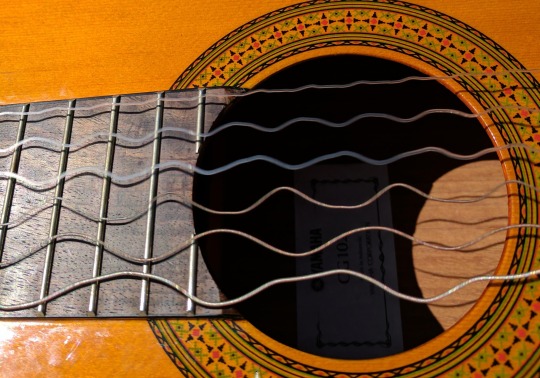
Image Credit: Reddit
The remaining oscillations in the matter freeze too, allowing for the formation of our modern galaxy clusters, galaxies, and even stars.
How we Look at the Sound
Using the image of the CMB, we can measure the ripples of the sound waves using a Fourier analysis of the temperature gradients.
The temperature is used because it correlates to regions of high or low density, of course, the hotter a location is in space, the more matter managed to get in there, thus releasing more stuff.
A Fourier analysis is a very common technique in sound measurements. It takes any arbitrary mathematical function, and converts it into a frequency spectrum.

A Fourier analysis. On the top, the original signal, on the bottom, the signal's frequency spectrum
Image Credit: The Mathematics of Waves and Materials Blog
We can conduct a Fourier analysis in two dimensions as well, we just perform two applications of the Fourier transform, but in two directions.

A 2D Fourier analysis. On the left, the original image, on the right, the image's 2D frequency spectrum
Image Credit: Python Coding Block
We can then take this 2D image and plot it on a graph of the distance from the centre.
Applying the analysis and the plotting function to an image of the CMB we get this graph here:

Note that 'Multipole moment' is, for the sake of simplicity, a frequency spectrum
Image Credit: Report of the Dark Energy Task Force, 2006
The above image is referred to as the power spectrum of the BAOs.
Adding constraints to Dark Matter/Energy
Dark Matter and Matter Density
The BAOs at the moment of them freezing become an incredibly useful measurement for the propagation of Dark Matter and Dark Energy.
Of course, dark matter is built into the equation, as they form a necessary component of the gravity force pulling things in. We can use the relative strength and period of the oscillations to estimate the amount of dark matter and it's ratio to Baryonic Matter.
Curvature
We can also use our graph for a second purpose: measuring the curvature of our universe.
You see, given the fact that our galaxies and galaxy clusters eventually end up forming from those regions of dense gas, and given that we know how 'far away' the CMB is (thanks to redshift).
We should know the approximate size of these dense gas regions in the CMB, given a certain curvature.
This will appear on our power spectrum as the shift in our graph, the location of our peaks along the x-axis.
In a universe that is hyperbolic, we should expect the density blobs to be small, and in a spherical universe, blobs that are larger. What we end up seeing is approximately a flat curvature.
Dark Energy
Now, thirdly, we can estimate the density of dark energy in our universe.
We can get this easily by measuring both matter density and curvature, as the two are related to the dark matter density.
But, we can also estimate it directly from analysing the power spectrum directly.
Dark energy affects the expansion of spacetime via the Friedmann equation, controlling for matter density, we can use the equation to quantify the Hubble parameter.
The size of the Hubble parameter, relative to our current Hubble constant, can be measured from the fact that the BAOs provide a standard measure of distance.
By analysing the power spectrum, we can effectively work backwards to derive a measurement for the Hubble parameter, and thus the presence of dark energy in the early universe.
Conclusion
Surprisingly a shorter-ish post this time, good on me.
Anyways I'll probably take a break for next week, as it's Christmas. Outside of that, I don't really know what else to say.
Follow if you want more, gib feedback on my post, and comment/repost your thoughts!
See ya later!
#physics friday#stem#academics#stemblr#science#physics#astronomy#astrophysics#cosmic microwave background
25 notes
·
View notes
Text
Cosmic Questions
One of the interesting predictions of modern physics is we shouldn’t be here. To get around that we need some fudges because, well, we are. But first, the problem. We believe the universe started with a very small exceptionally hot “fireball”, essentially pure energy, and this was distributed extremely smoothly. This produces a problem in that matter/energy is flying apart very quickly. We can…
View On WordPress
0 notes
Text
1964–Cosmic microwave background


Discovery of the cosmic microwave background radiation by Robert Woodrow Wilson and Arno Penzias.
0 notes
Text
The Majestic Eagle Nebula (M16): Unveiling the Stellar Sculptor
Credit: NASA, ESA, and the Hubble Heritage Team (STScI/AURA)
In the depths of the cosmos lies a breathtaking celestial masterpiece known as the Eagle Nebula, or Messier 16 (M16). Located in the constellation Serpens, this nebula has captivated astronomers and stargazers with its stunning beauty and unique features. In this article, we will embark on a journey to explore the enigmatic Eagle…

View On WordPress
#Astrobiology#Astronomical Catalogs#Astronomical Databases#Astronomical Imaging#Astronomical Instruments#Astronomical Observations#Astronomical Phenomena#Astronomical Spectroscopy#Astronomical Surveys#Astronomical Units#Black Holes#Celestial Bodies#Constellations#Cosmic Microwave Background#Cosmology#Dark Energy#Dark Matter#Exoplanets#Galaxies#Light-years#Meteor Showers#Nebulae#Planets#Solar System#Space Exploration#Stars#Stellar Evolution#Supernovae#Telescopes
6 notes
·
View notes
Text

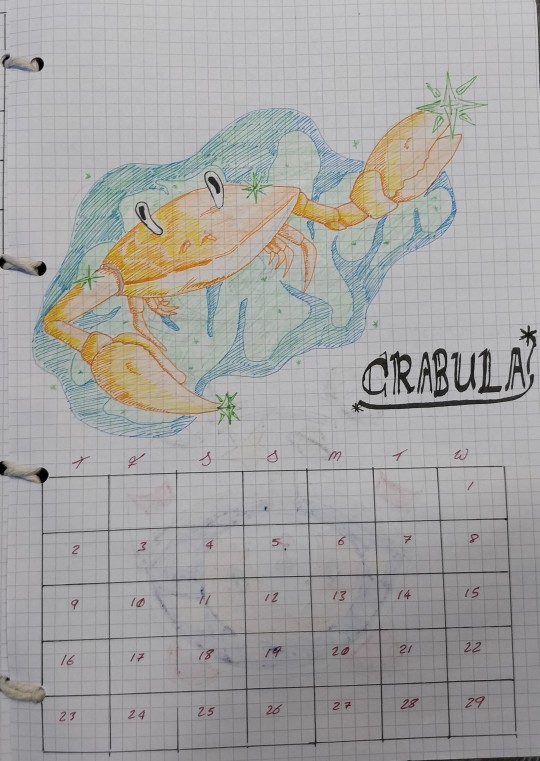

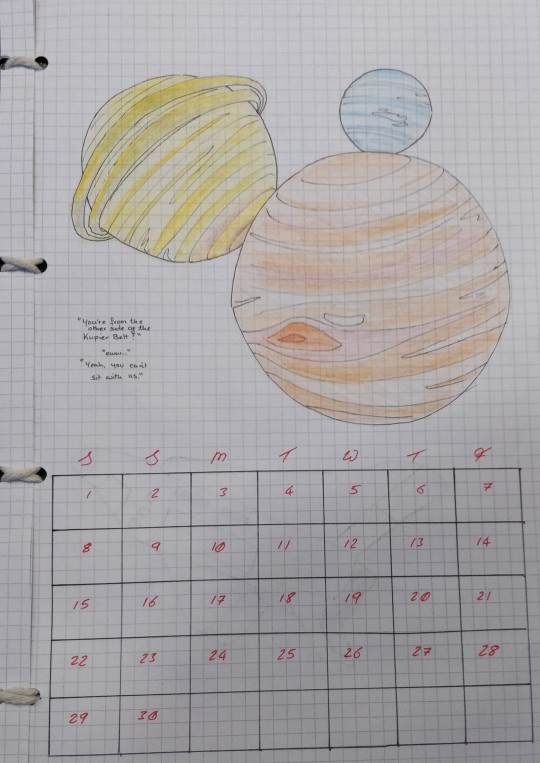
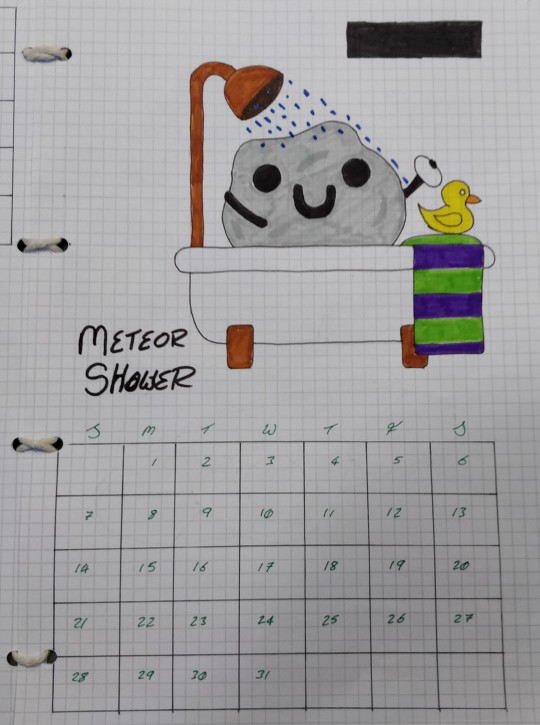

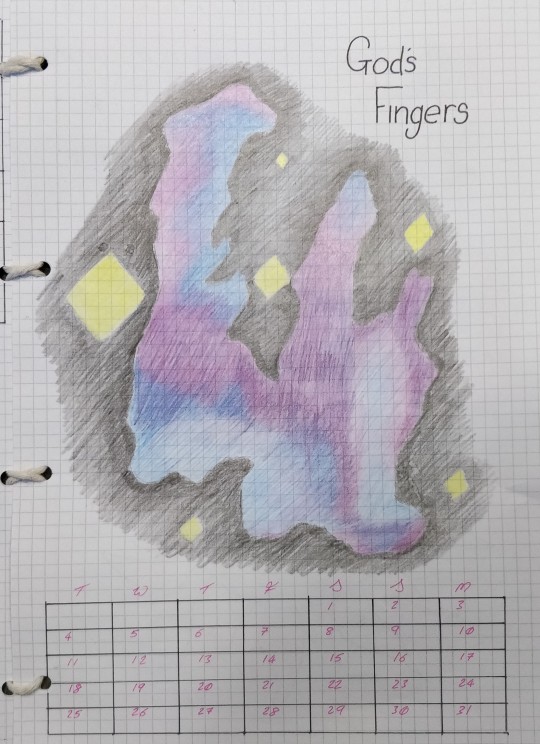

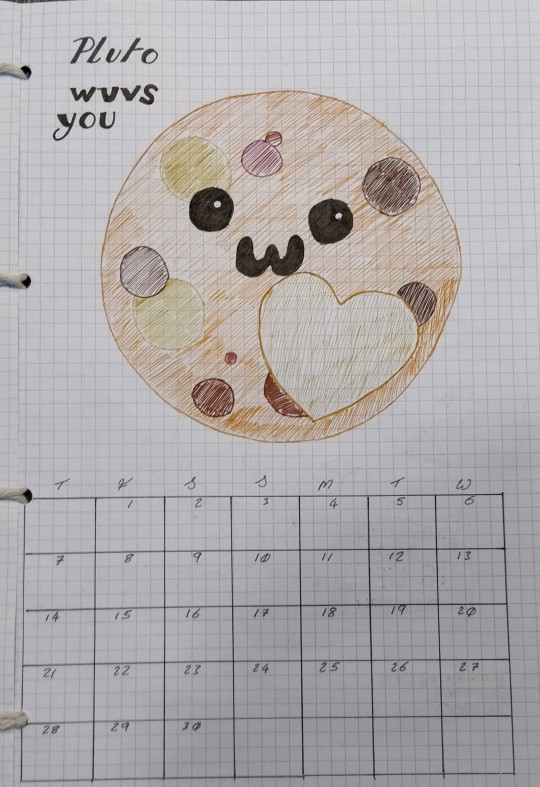

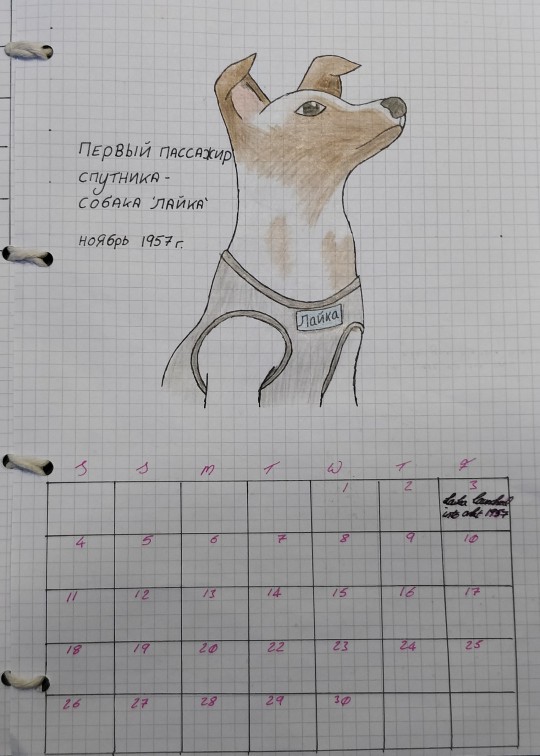

A space themed but also very annoying to actually use calender my housemates and I drew for a friend as her Christmas gift.
#space#space corgi#crab nebula#space shuttle#kuiper belt#meteor shower#UFO hamster#pillars of creation#sunglasses sun#Pluto#cosmic microwave background#Laika#Pac man#calendar#Christmas gift#we are terrible friends in many ways#drawing#art#collaboration
1 note
·
View note
Text
We’ve Got the Secrets of the Universe, and Yoda’s Spilling the Tea!
Hello, cosmic beings and star children of the Tumblr-verse! Brace yourselves, because we’re about to drop some intergalactic wisdom that’s hotter than Tatooine at high noon. This isn’t your everyday, run-of-the-mill space talk. Oh no, this is the universe explained by none other than the galaxy's wisest, greenest, and arguably cutest sage, Grand Master Yoda!
Prepare to have your star-studded socks knocked off!
Picture this: Yoda, in all his green, wrinkly splendor, schooling us on the very fabric of our existence. He’s delving (oops, we didn’t just say that) into the cosmic microwave background, the echo of the universe’s wild, fiery, and oh-so-mysterious birth. With every word, it’s like Yoda himself is using the Force to tickle our brains with knowledge.
Don’t know what the cosmic microwave background is? Well, aren’t you in for a treat. It’s the afterglow of all creation, a whisper of the Big Bang, and the fingerprint of the universe’s rowdy teenage years, still visible and detectable. Everywhere we look, from the farthest reaches of space to the deepest corners of our soul (okay, maybe not that deep), it’s there—a faint, ancient glow echoing the universe's chaotic beginnings.
And who better to narrate this celestial saga than Yoda? Our beloved green guru is taking us back, way back, to a time before star-studded galaxies and before the dark void of space was Instagrammable. We’re talking about a universe that was hotter than a love affair between dual suns and denser than a black hole’s core.
“Rapidly, the universe expanded, it did.” Oh, the eloquence! The grace! The Yodaisms! We’re floating amidst the stars with every uttered syllable. The CMB isn’t your ordinary glow—it’s a cosmic relic, a beacon of the universe's riotous youth and a testament to its fiery inception. It’s not just science, darling; it’s poetry painted across the celestial sphere.
And guess what? Yoda’s not just talking the talk; he’s walking the walk across the galaxies, enlightening us on how this ancient radiation is unveiling the shadowed, enigmatic paths of the dark side (read: dark matter). It’s a glow-up story of cosmic proportions, where invisible forces are sculpted into existence by the luminous touch of ancient light.
Stay with us as we soar through echoes of the past, pulsing with residual energy, vibrating with tales of ancient battles fought amidst the stars. And yes, you guessed it, all of this under the enlightening guidance of Master Yoda. The CMB isn't just ancient history—it's a looking glass into the future, a whispering of destinies yet unwritten, and a dance of stars yet unborn.
So buckle up, fellow star gazers and galactic wanderers. It's not every eon we get schooled by the legendary Yoda. He’s taking us on a starship of knowledge, where every twinkling star and silent void is a verse of an eternal ballad, a sonnet of existence penned by the universe itself. We’re not just learning—we’re becoming one with the cosmos.
Who needs a spaceship when you’re cruising through the galaxies with Yoda as your guide? Hold on tight; it’s about to be an otherworldly ride!
0 notes